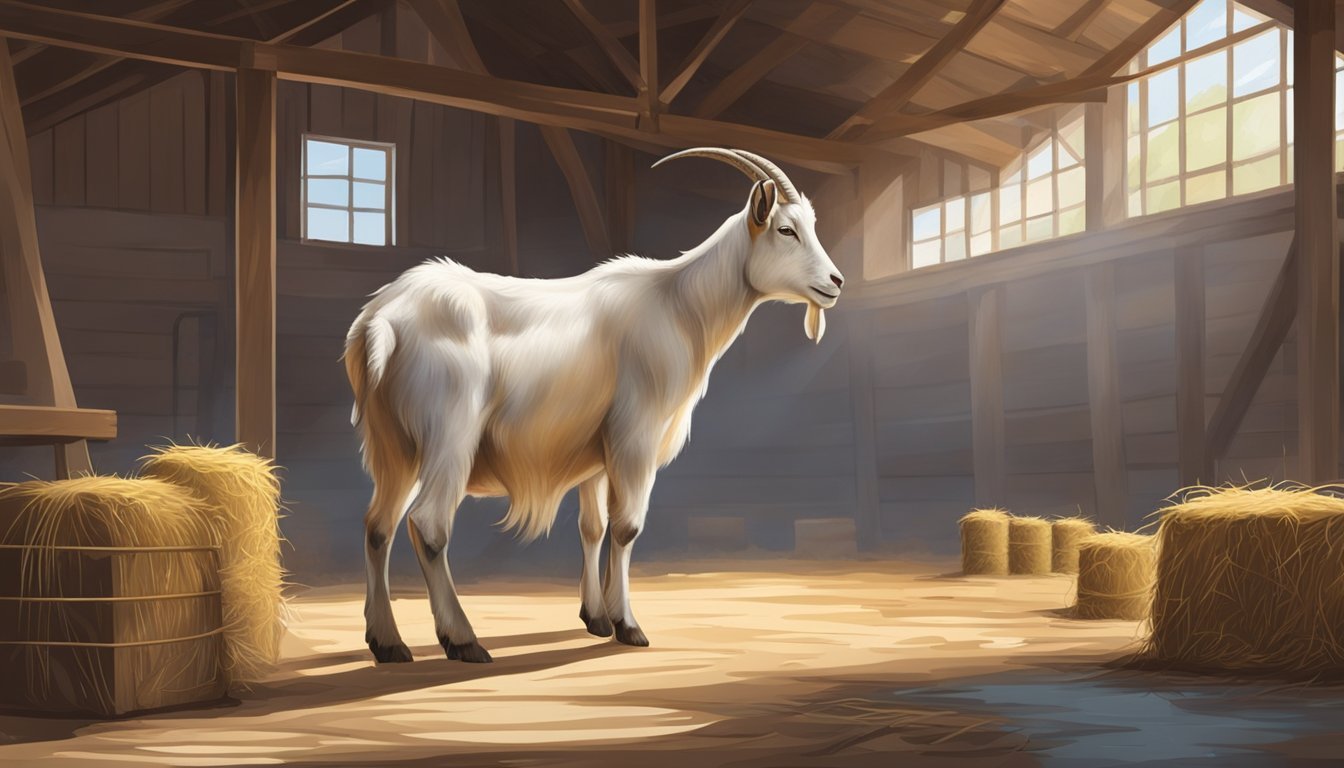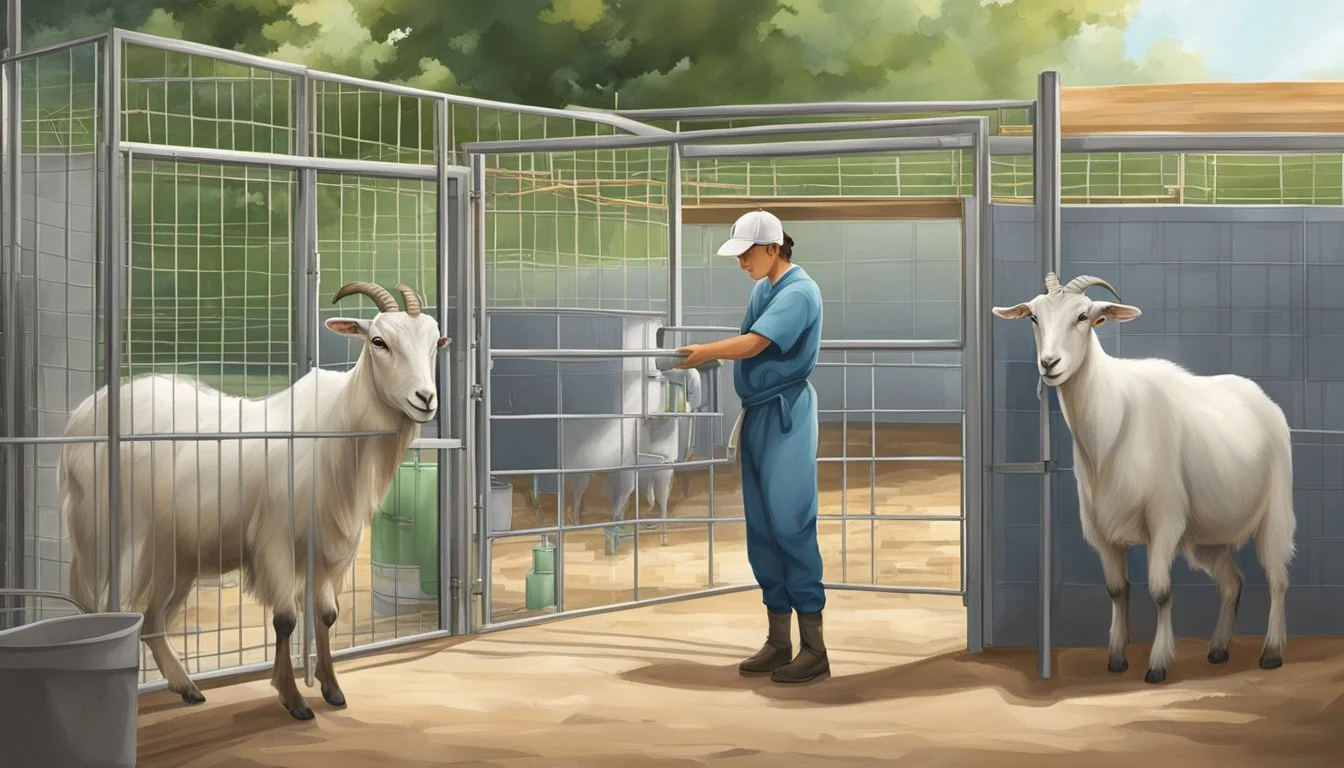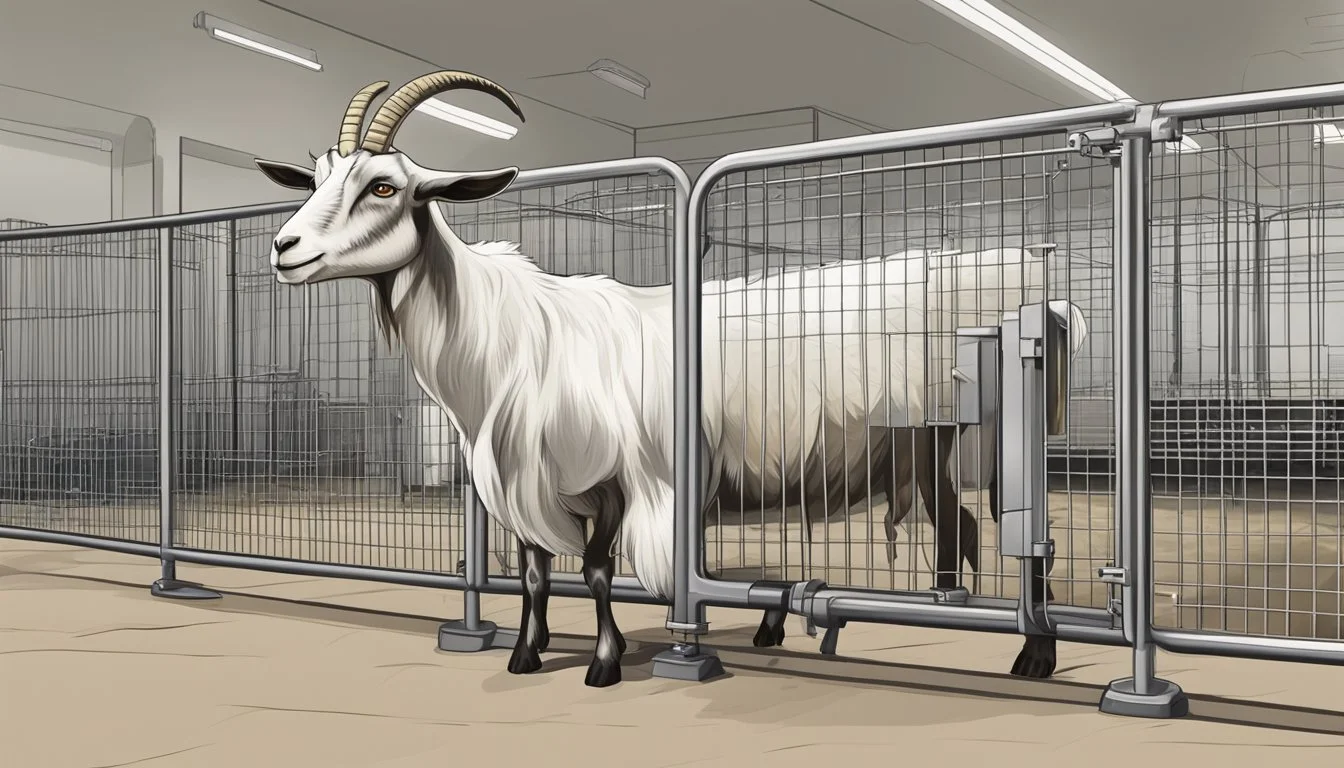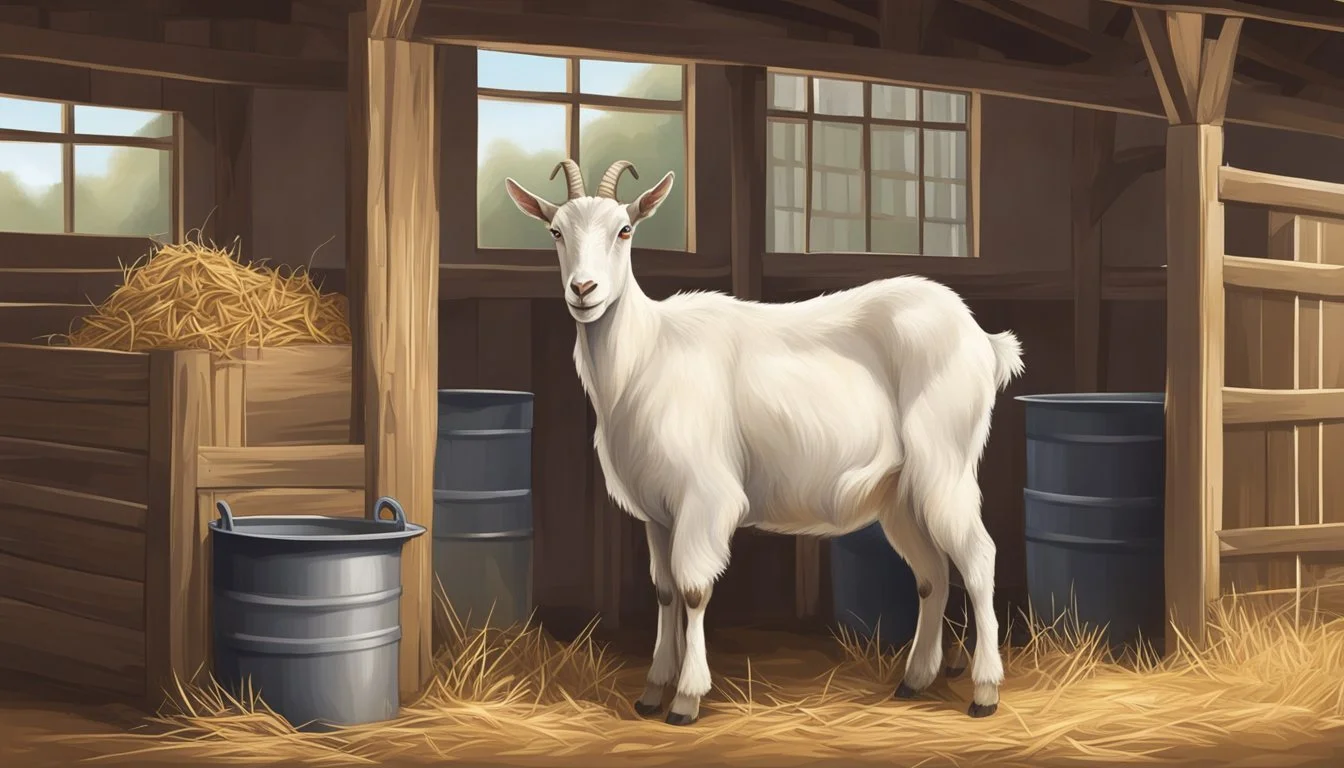Tips for Successfully Breeding Your Milking Goat
Essential Strategies for a Healthy Herd
Breeding milking goats is a significant aspect of managing a dairy goat operation. It involves careful planning and consideration to ensure the health and productivity of both the does and the resulting kids. Producers aim to optimize milk production through selective breeding, which requires understanding the goats' reproductive cycles and genetics. Key to success is a commitment to maintaining the health and well-being of the animals, which directly influences their ability to produce high-quality milk.
Selecting the right time for breeding is crucial. Goats have seasonal breeding patterns, and understanding these cycles is essential for timely and successful mating. Producers typically time the breeding season to ensure kidding occurs when forage quality is high, allowing does to have ample nutrition for lactation. It's also important to consider the age and weight of the goat before breeding, as this can affect the health of both the doe and her offspring.
Maintaining the health of the goats prior to breeding is equally important. Goats should be dewormed and provided with a nutritionally balanced diet to ensure they are in optimal condition for pregnancy and lactation. By paying close attention to these details, producers can enhance their herd's productivity and the profitability of their operations.
Understanding Goat Breeding
Successful goat breeding is an intricate process that hinges on timing, genetic understanding, and breed selection. Doing it correctly can lead to a thriving herd with optimal milk production.
Basics of Goat Breeding
Breeding goats requires a solid grasp of their reproductive habits. Generally, a female goat (doe) comes into heat, signaling her receptiveness for breeding, approximately every 21 days. This cycle is critical for timing the breeding to ensure successful conception. Male goats (bucks) are capable of breeding at a young age; however, for the longevity and health of both bucks and does, it's recommended to breed them when they are physically mature.
Genetics and Heredity
The genetics of goats play a key role in determining the traits of future offspring. Understanding heredity can help a breeder select goats that will produce strong, healthy kids with desired characteristics. This includes factors such as milk production, temperament, and resistance to diseases. Breeders often use selective mating to enhance or minimize specific genetic traits in their herd.
Goat Breeds Overview
Different goat breeds excel in various aspects of production. Dairy breeds such as Saanen, Alpine, and Nubian are celebrated for their high milk yield, making them excellent choices for milk production. Each breed has unique qualities and benefits; for instance, Saanens are particularly known for their substantial milk output.
Breeding Seasonality
Goats are seasonal breeders, with their breeding season typically beginning in the cooler months of late summer to early winter. During this time, does experience estrus, or heat, at more frequent intervals. Recognizing this seasonality and understanding its impact is vital for planning the breeding calendar to align with optimal fertility periods. Breeds such as the Nigerian Dwarf or Pygmy may have more flexible breeding cycles, offering a broader window for successful breeding.
Selecting Breeding Stock
The selection of breeding stock in a milking goat operation demands careful consideration of health, genetics, and conformation. It sets the stage for the success of any breeding program.
Evaluating Doe Health
Evaluating the health of a doe is crucial before she is bred. Key health indicators include:
Body weight: A suitable weight for the breed indicates good nutrition.
Conformation: Look for strong udder attachments and appropriate teat size for ease of milking.
History: A doe's past kidding and lactation records can forecast future performance.
Choosing the Right Buck
Selecting a buck means examining his:
Genetics: The buck should carry desirable traits for milk production.
Health: As with does, a buck must be robust and free from diseases.
Conformation: Ideal conformation ensures he can successfully breed and pass on superior traits.
A buck's lineage can also shed light on potential genetic benefits or concerns such as inbreeding.
Breeding Program Goals
Aligning breeding stock selection with program goals is essential. Consider:
Milk Production: If the goal is high milk yield, prioritize genetics with a history of strong lactation.
Breed Characteristics: Some breeds excel in milk fat content—choose accordingly.
A clear set of goals helps streamline selection and manage breeding practices effectively.
Management of Inbreeding
To manage inbreeding, a breeder should:
Monitor pedigrees closely for common ancestors.
Introduce new genetics periodically, for instance through a new herd sire.
Emphasize on diversified genetics to maintain a healthy breeding stock.
Thorough records and considered management can prevent the negative effects of inbreeding in the herd.
Nutrition and Care for Breeding Goats
Proper nutrition and care are essential for the health and fertility of breeding goats. Paying close attention to their dietary intake and health regimen ensures they are in peak condition for successful breeding.
Nutritional Requirements
Breeding goats require balanced nutrition to support reproductive functions. The diet should include adequate energy, protein, and fiber. A high-quality forage, such as alfalfa, is recommended for its high-protein content and calcium, supporting the doe's needs during gestation and lactation. Energy needs can be met with the inclusion of grains, while roughage is important to maintain optimal digestive health.
Supplementing Minerals and Vitamins
Mineral and vitamin intake is crucial for preventing deficiencies that can impede fertility and overall health. Selenium, often deficient in many soils, is particularly important and can be provided through mineral mixes or supplements. Additionally, ensuring an adequate supply of calcium and phosphorus is necessary for bone health and milk production. Vitamins A, D, and E are also vital. They can be supplied through a balanced feed designed for breeding goats, which has been fortified with necessary minerals and vitamins.
Health Monitoring and Care
Regular health monitoring is essential for breeding goats. This includes checking for any signs of illness or nutritional deficiencies and providing prompt veterinary care if needed. Along with monitoring, maintaining a schedule for deworming and vaccinations keeps the herd healthy. Special attention should be given to hoof care and body condition scoring to avoid lameness and ensure the goats are neither underweight nor overweight, both of which can affect fertility.
The Breeding Process
Effective goat breeding requires timing, knowledge of goat behavior, and proper technique. Successful outcomes hinge on understanding the natural cycle of the animals and employing either traditional or assisted reproductive methods. Here's how to navigate the breeding process:
Determining the Right Time to Breed
Goats exhibit a seasonal reproductive cycle, generally showing signs of estrus or heat in the cooler months. To maximize the potential for successful breeding, it's critical to closely observe does for signs of heat, which occur every 18-24 days and last from 24 to 36 hours. Signs include restlessness, bleating, and tail-wagging. Breeding ideally occurs in the doe’s second or third estrus cycle to ensure they are at a mature weight and condition.
Natural Mating Techniques
Goats have a strong natural instinct to mate, particularly when does display behaviors indicative of heat. Bucks will become more vocal and show greater interest in the does. For natural breeding, introduce a buck to the doe when she is in heat. Monitoring the doe's behavior, such as flagging and standing for the buck, is indicative of acceptance and successful copulation.
Artificial Insemination
Artificial insemination (AI) is an alternative to natural mating that offers the advantage of genetic diversity without requiring a buck on the premises. AI should be performed by a trained technician and timed with the doe's estrus cycle to increase the chance of successful conception. This method requires precise handling of semen and understanding of the doe's reproductive anatomy.
Estrous and Kidding Preparations
The breeding process culminates in the gestation period, which lasts approximately 150 days for goats. Preparations for kidding should include maintaining the health and nutrition of the pregnant doe and preparing a clean, safe kidding environment. Monitoring the doe for signs of impending labor, such as udder development and behavioral changes, is essential for timely support during the kidding process. After birth, does will produce milk that is influenced by the breed and their overall health and nutrition.
Post-Breeding Management
After successful breeding, attentive post-breeding management is crucial to ensure the health of the doe and her offspring. This includes monitoring of pregnancy, preparation for kidding, and care from birth to weaning.
Pregnancy Care
During pregnancy, a doe requires enhanced nutrition to support both her needs and the developing kids. The typical gestation period for goats is approximately 150 days. A balanced diet rich in energy, protein, vitamins, and minerals is essential, especially during the latter half of gestation when the fetus grows rapidly. Regular health check-ups should be conducted to assess the doe's condition and fertility, and to monitor for any potential issues.
Preparing for Kidding
As the end of the gestation period nears, preparing for kidding is paramount. An area should be readied where the doe can kid in a clean, stress-free environment. The space should be disinfected and well-bedded, with easy access to water and food. Familiarize yourself with the signs of approaching labor, which may include restlessness, udder filling, and the doe withdrawing from the herd.
Birth and Weaning
At birth, immediate attention is needed to ensure the doe kid can breathe properly and is dried off, keeping it warm to prevent hypothermia. Colostrum intake within the first few hours is vital, as it provides essential antibodies that protect against diseases. Observing the kids' conformation early on is beneficial for future breeding purposes. Weaning kids can begin when they are eating solid food effectively, typically around 8 to 10 weeks of age, allowing the doe's milk to be used for dairy purposes without affecting the kids' growth and health.
Milking Management
Effective milking management is crucial for maintaining high milk production levels and ensuring the health of dairy goats. Attention to detail in lactation schedules, milking techniques, and milk handling can lead to successful breeding outcomes.
Lactation and Milk Production
Goat milk production typically follows a cycle with peak yield occurring shortly after freshening and gradually decreasing until weaning. To optimize milk output, it is essential to establish a consistent milking routine, ideally twice daily. A well-designed milk stand can facilitate the process, providing comfort to the goat while allowing easy access for milking.
First Month: Higher butterfat content.
Following Months: Stable production before gradual decline.
Milking Techniques and Training
Proper training is required to ensure goats are comfortable and cooperative during milking. Introducing goats to the milking stand with sweet feed as a reward can create a positive association. Employ gentle, efficient hand milking or a clean milking machine to maintain milk quality and minimize the risk of introducing bacteria into the milk supply.
Training: Positive reinforcement with sweet feed.
Technique: Consistent, gentle motions or sanitized machinery.
Milk Quality and Handling
Handling of goat milk post-extraction is critical to preserve its quality. The milk should be rapidly cooled to thwart bacterial growth and maintain freshness. Use of clean equipment is paramount to prevent contamination—this includes everything from the milking apparatus to storage containers.
Cooling: Quick cooling to below 4°C (39°F).
Equipment: Sterilized and airtight containers.
Raising Dairy Goats
Successfully raising dairy goats for milk production entails understanding their specific housing requirements, nutritional needs, and the intricacies involved in dairy production and marketing. This section provides you with essential information for managing dairy goats such as Nubian, Alpine, Nigerian Dwarf, Saanen, Sable, Oberhasli, Toggenburg, and Golden Guernsey.
Housing and Climate Adaptation
Dairy goats require appropriate shelter to thrive in various climates. For instance, they need 10-20 square feet of sheltered area per goat to ensure their well-being, with larger pasture areas reducing the need for indoor space. Climate adaptation is crucial, as breeds like the thick-coated Oberhasli may fare well in cooler environments, while others such as the Nubian, with their large ears and slender build, prefer warmer climates.
Shelter space: 10-20 sq. ft/goat
Pasture: Minimum of 200 sq. ft/goat
Breeds like Saanens are adaptable to a variety of climates.
Dairy Goat Nutrition
The nutritional requirements of dairy goats vary based on their stage of lactation, age, and breed. They require a diet that includes a balanced grain mix and free-choice hay to maintain optimal health and milk production. Goats recovering from labor may consume more grain, but typically a common rule is to provide 1 pound of grain for every 3-5 pounds of milk produced. Proper nutrition is vital for maintaining the high milk yield that breeds like Saanen and Alpine are known for.
Grain: 1 lb for every 3-5 lbs of milk
Hay: Free-choice to ensure continuous access
Dairy Production and Marketing
Successful dairy production starts with understanding efficient milking practices and factors affecting milk quality. The equipment required can include stainless steel pails and proper sanitation supplies. Top-producing dairy breeds like the Alpine and Nubian can yield significant volumes of milk suited for various dairy products. When entering the market, goat farmers must account for the demand for goat milk, which is used in products ranging from cheese to skincare items, highlighting the importance of strategic marketing.
Equipment: Stainless steel pails, sanitation supplies
Marketing: Align with demand for goat milk products
By paying attention to these key areas, one can nurture a thriving dairy goat farming endeavor, with each breed offering unique characteristics that contribute to their suitability for milk production and climate resilience.
Record Keeping and Improvement
Effective record keeping is imperative for enhancing productivity, health, and genetic potential within a milking goat herd. Accurate records serve as a cornerstone for making informed decisions in a breeding program and managing the herd with precision.
Tracking Breeding and Health Records
Breeding Records: Key details such as breeding dates, identification of sires and dams, and kidding outcomes should be meticulously documented. This facilitates tracking of genetic lines and helps in assessing breeding success. The Backyard Goats website emphasizes the importance of preserving the integrity of registered herds through correct record keeping.
Example Table:
Doe ID: 001, Sire ID: A100, Breeding Date: 03-01-2024, Kidding Date: 07-30-2024, Kidding Outcome: Twins
Doe ID: 002, Sire ID: A101, Breeding Date: 03-05-2024, Kidding Date: 08-04-2024, Kidding Outcome: Single
Health Records: They must include vaccination dates, health checks, and any treatment administered. Consistent health monitoring ensures a robust herd, paving the way for sustained growth and productivity.
Improving Productivity and Growth
Productivity: Data on milk yields, growth rates, and other performance metrics can reveal trends and pinpoint areas for improvement. For instance, the correlation between well-managed nutrition and the resultant milk production is highlighted on the ALifeOfHeritage website, suggesting that selective breeding for high-yield dairy breeds like Saanen can significantly impact productivity.
Bullet List Example:
Average Daily Milk Yield: 3.5 liters
Growth Rate: 1.5 kg/week
Growth: It's not only about immediate output but also future potential. Tracking growth rates against nutritional input can determine the efficiency of the herd's diet and inform management practices to optimize physical development.
In conclusion, combining attentive record keeping with a strategic approach to breeding and health management is fundamental to the success of any milking goat operation.
Ethical Considerations
When breeding milking goats, ethical considerations must take center stage. It's imperative to employ responsible breeding practices and to prioritize animal welfare to ensure a sustainable and humane approach.
Responsible Breeding Practices
Responsible breeding practices are key to the longevity and health of both milking goats and the industry as a whole. Breeders are tasked with making informed decisions, which include:
Educational Investment: Breeder education is essential. They should be well-versed in genetic principles, goat physiology, and the implications of their breeding choices.
Purposeful Mating: Breeding should have clear goals, such as improving milk production, without compromising the overall well-being of the goats.
Breeders should avoid overbreeding and maintain detailed records to track genetic lines and health histories to prevent inbreeding and hereditary diseases.
Animal Welfare
The welfare of the goats is a paramount concern that should be integrated into every breeding program. This encompasses:
Living Conditions: Ensuring that goats have access to clean, spacious, and safe living environments.
Healthcare: Providing regular veterinary care, including vaccinations and parasite control, to maintain the health of the herd.
Considering welfare extends beyond the physical to psychological well-being, allowing goats adequate social interaction and enrichment opportunities.
While the focus on milk, meat, or fiber production is important, it should never eclipse the ethical responsibility breeders have towards their animals. They must balance productivity with compassion and welfare, ultimately leading to a more ethical and robust breeding program.
Advanced Breeding Techniques
To optimize milking goat productivity through breeding, embracing advanced techniques is essential. These techniques leverage scientific understanding of genetics, refined breeding programs, and innovative tools to enhance desired traits in goat herds.
Understanding Advanced Genetics
Advanced genetics plays a crucial role in the success of milking goat breeding. By comprehensively studying the goat's DNA, farmers can identify specific traits linked to milk production and overall health. They use this information to make informed decisions about which goats to breed together. The goal is to promote the passing of advantageous genes to offspring, potentially increasing milk yield.
Controlled Breeding Programs
Controlled breeding programs are structured plans that allow for the careful selection and mating of goats to achieve specific objectives. These programs often use artificial insemination to ensure that the desired traits from a superior buck are passed on to the progeny. Tools like the goat gestation calculator assist in precisely monitoring pregnancy timelines, while a buck apron might be employed to prevent unwanted natural mating.
Innovative Breeding Tools
The use of innovative breeding tools such as detailed genetic profiling and high-quality semen preservation methods enhances the success rates of selective breeding. These tools facilitate the implementation of advanced breeding techniques, making it possible to maintain genetic diversity while amplifying positive traits. Moreover, breeders may castrate less desirable bucks to prevent them from contributing genetically, ensuring that only the best genes are propagated within the milking goat population.
Common Challenges and Solutions
The path to successful breeding of milking goats involves overcoming several challenges, specifically in the realms of fertility, disease management, and digestive health. Below, key strategies to tackle these issues are detailed to ensure a thriving goat herd.
Addressing Infertility Issues
Infertility can be a significant obstacle in breeding goats. To enhance fertility, shepherds must provide a diet with adequate nutrients and minerals. For instance, incorporating iron-rich supplements can prevent anemia, which is linked to reproductive issues. Attention to body condition and timing of breeding is also critical. She should monitor goats closely for signs of estrus and ensure that the male is fertile and in good health to maximize the chances of successful breeding.
Managing Diseases and Parasites
Goats' health can be compromised by diseases like CAE (Caprine Arthritis Encephalitis) and parasites which can both directly and indirectly affect fertility and milk production. Regular health check-ups, vaccinations, and a parasite control program are instrumental in maintaining a disease-free herd. She may need to employ fecal tests to monitor for parasites and use anthelmintics carefully to prevent resistance.
Rumen Health and Digestion
The rumen plays a pivotal role in nutrient absorption and overall goat health. A diet rich in forage supports rumen bacteria, essential for proper digestion and production of volatile fatty acids. Farmers should avoid sudden dietary changes that may disturb the rumen's balance and lead to digestive issues. They must ensure the goats have access to clean water and a diet that supports healthy rumen fermentation processes.
Conclusion
Successful goat breeding hinges on a solid foundation of education and understanding of the intricacies involved. Breeders should ensure that their goats receive adequate nutrition during key stages such as pre-breeding, breeding, and gestation to bolster fertility rates and overall animal welfare.
Careful attention to goat health is imperative. Breeders need to follow a strategic deworming schedule and keep vaccinations up to date to prevent diseases that could negatively impact breeding success.
Responsible breeding also necessitates recognition of the physical and behavioral signs of readiness in both bucks and does. Breeding too early or too late can affect success rates, so knowledge of the goat reproductive cycle becomes a cornerstone of any effective breeding program.
It's important for breeders to be mindful of the welfare of their animals throughout the breeding process. This encompasses providing a stress-free environment, adequate shelter, and good quality forage and feed, which contribute to the overall wellbeing of the goats.
In essence, the blend of comprehensive knowledge in goat breeding practices, a commitment to maintaining high health standards, and a dedication to animal welfare form the trifecta that leads to successful goat breeding outcomes.






